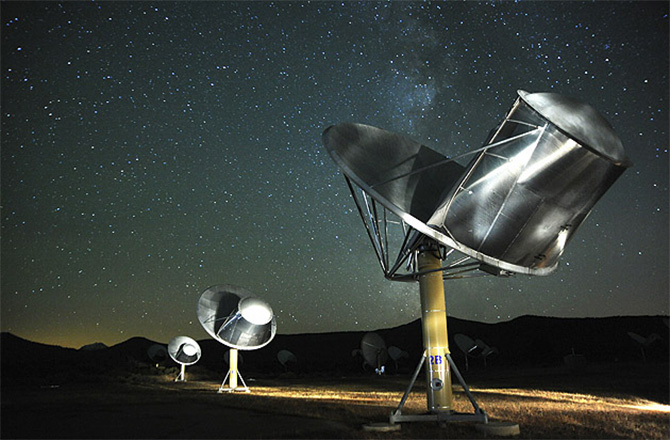Aliens May Be Out There, But Too Distant for Contact

The Milky Way may be home to some 3,000 extraterrestrial civilizations but the vast distances between our galactic cousins will make contact extremely rare, a new study concludes.
Data collected by NASA's Kepler space telescope and other observatories scouting for planets beyond the solar system indicate Earth is one of some 40 billion potentially habitable worlds in the galaxy, with about one new life-friendly planet forming every year, astronomer Michael Garrett, head of the Dutch astronomy research foundation ASTRON, said at the International Astronomical Congress in Toronto.
13 Ways to Hunt Intelligent Aliens
"On average, you'd expect the civilizations to be separated by at least 1,000 light-years in the Milky Way. That's a large distance, and for communication purposes you need to allow for twice the travel distance, so you're talking about civilizations that have to be around for at least a few thousand years in order to have the opportunity to talk to each other," Garrett said.
"We don't really know the time scales in which civilizations persist," he added.
PHOTOS: How Aliens Can Find Us (and Vice Versa)
The one example available -- Earth -- indicates that life essentially developed as soon as the conditions were right, but intelligent life arose comparatively late.
Get the Space.com Newsletter
Breaking space news, the latest updates on rocket launches, skywatching events and more!
"It's really just essentially in the last few minutes of the overall evolution of life on the planet," Garrett said. "I don't want to be too negative about this, but ... my basic conclusion is that SETI signals will be rare in the Milky Way."
That doesn't mean astronomers shouldn’t look, he added. Quite the contrary, given the huge technological leaps in radio astronomy and in data processing techniques compared to what was available for Search for Extraterrestrial Intelligence, or SETI, programs 60 years ago.
NEWS: Alien Life Discovery Could Happen Within 20 Years
SETI also is benefitting from sister radio astronomy projects, such as the ongoing quest to find the source of mysterious transient radio bursts.
“SETI is not easy, but it’s a pursuit that is well worth doing. The question is so important,” Garrett said. “Everyone is interested, not just scientists and space enthusiasts. People in the street are interested to know what else is out there.”
This article was provided by Discovery News.
Join our Space Forums to keep talking space on the latest missions, night sky and more! And if you have a news tip, correction or comment, let us know at: community@space.com.

Irene Klotz is a founding member and long-time contributor to Space.com. She concurrently spent 25 years as a wire service reporter and freelance writer, specializing in space exploration, planetary science, astronomy and the search for life beyond Earth. A graduate of Northwestern University, Irene currently serves as Space Editor for Aviation Week & Space Technology.









